Ever zipped up a hoodie? That’s jQuery. Now imagine a zipper that’s smoother, sleeker, and fits your style better—that’s what we’re unzipping today: the realm of jQuery alternatives.
Picture jQuery as the trusty workhorse, pulling the cart of web design with ease. But the path ahead bristles with new tech and lighter loads. We’re not just aiming for different—we’re aiming for better. Swapping jQuery for a fresh option could be that spice your web project craves.
In this walkthrough, we will unfurl the toolbox and shine a light on contenders like Vue.js and React, frameworks that talk the talk and walk the walk—without the extra weight.
We’ll delve into lighter libraries that streamline DOM manipulation and AJAX calls like Zepto.js, perfect for those chasing a minimalist vibe in their coding journey.
By the time we drop the last pixel, you’ll be ready to leap into the future of front-end development, armored with knowledge on easy-to-implement, high-performance alternatives.
Ready to boost your web design game? Let’s dive into the code!
jQuery alternatives
| jQuery Alternative | Size (approx.) | Features | Browser Support | License |
|---|---|---|---|---|
| Vanilla JS | ~50KB | Native browser API | All modern browsers | N/A |
| zepto.js | ~10KB | Chainable, Ajax, effects | Mostly modern browsers | MIT |
| Cash | ~5KB | Chainable, ESM support | IE10+, modern browsers | MIT |
| Umbrella JS | ~4KB | Simple API, modular | IE11+, modern browsers | MIT |
| Alpine.js | ~11KB | Directives for reactivity | IE11+, modern browsers | MIT, GPLv2 |
| nanoJS | ~1KB | Minimalist | Most browsers | MIT |
| Balalaika | <1KB | Small, easy to expand | Unknown | MIT |
| jBone | ~2KB | Focus on Events, extends cash | Most browsers | MIT |
| DOMtastic | ~3KB | jQuery-like, modular | IE10+, modern browsers | MIT |
| Minified.js | ~3KB | Animation, Ajax, promises | IE8+, modern browsers | MIT |
| Sprint | ~4KB | Focus on performance | Modern browsers | MIT |
| Zest | ~2KB | CSS selector engine | Modern browsers | MIT |
| Bliss | ~3KB | Easy to use, enriched API | IE9+, modern browsers | MIT |
Vanilla JS
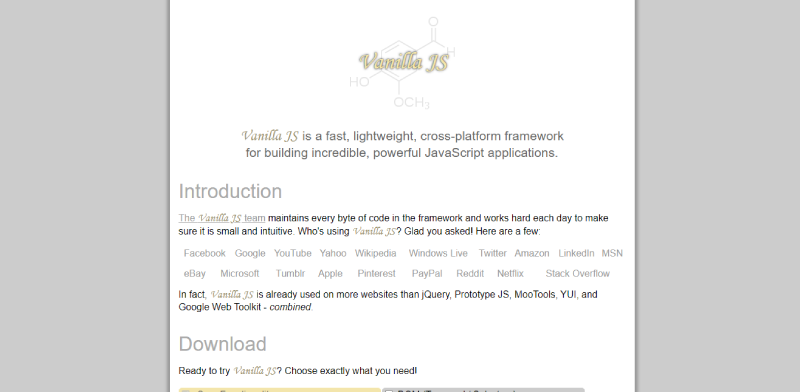
Vanilla JS isn’t just plain old JavaScript—it’s the pure, no-frills flavor, straight from the coding orchard. No need for extra libraries; get down to the nitty-gritty, tapping directly into the browser’s own capabilities. Embrace the power of writing less to do more, where every line of code feels like penning a haiku: concise and purposeful.
Best Features
- No library dependencies
- Lightweight and fast
- Direct browser DOM manipulation
What we like about it:
The sheer simplicity. It’s the ultimate back-to-basics approach, reminding us that sometimes, the purest form of code is the mightiest.
zepto.js
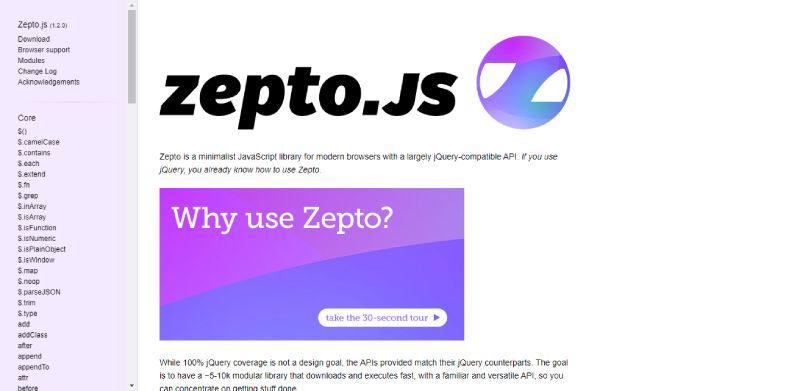
Picture this: jQuery’s long-lost, lightweight cousin, zepto.js, tiptoes in, offering a similar API in a much smaller package. It’s optimized for modern browsers, so say goodbye to the extra weight; zepto.js is ready to sprint on the track of front-end development, keeping pace with your project’s agility and grace.
Best Features
- jQuery-compatible syntax
- Small footprint
- Focused on modern browsers
What we like about it:
Tiny but mighty; zepto.js delivers the familiar without the bloat. It’s all about swift DOM manipulation for those who want speed by their side.
Cash
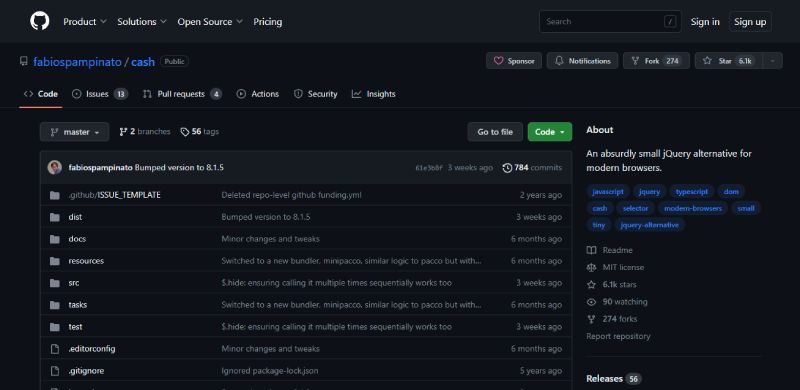
Cash is like finding a twenty-dollar bill in old jeans—it’s a pleasant surprise in the world of JavaScript utilities. It mimics jQuery’s dollar sign window to bliss without the excess, slipping into projects where you want to remain lightweight without losing the jQuery-esque touch.
Best Features
- Familiar jQuery syntax
- Small file size
- Extensibility with plugins
What we like about it:
Cash is unapologetically frugal with resources, proving that even the smallest library can make it rain with functionality.
Umbrella JS
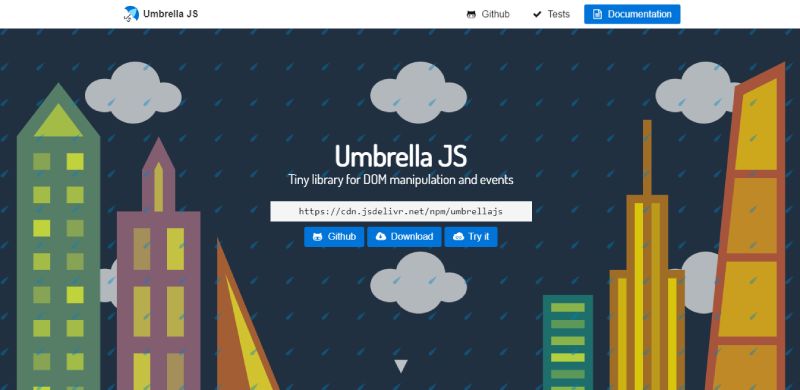
Just as an umbrella shelters from the rain, Umbrella JS covers your basic DOM needs without drowning you in complexity. The fluent and chainable methods make it a breeze to select, manipulate, and traverse the DOM tree. It’s a minimalist’s day at the beach — simple, effective, and oddly satisfying.
Best Features
- Fluent and chainable API
- Lightweight and nimble
- Intuitive for jQuery users
What we like about it:
The way it manages to be both easy and powerful, like a casually thrown frisbee that zips through the air with precision.
Alpine.js
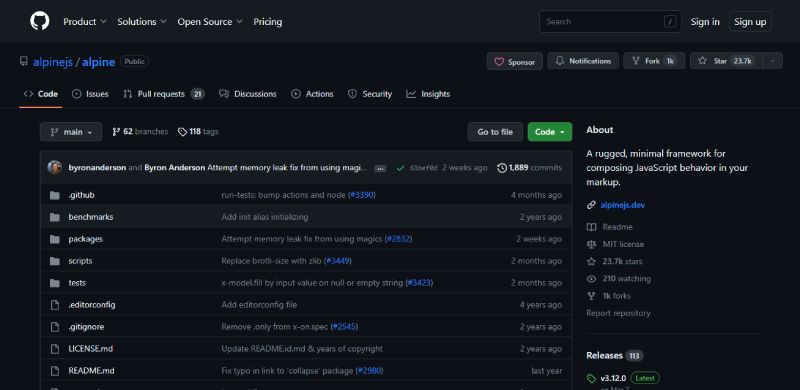
Alpine.js scales the heights of JavaScript functionality with a lean, declarative approach. It allows you to sprinkle interactivity into your markup like a seasoned chef adds just the right pinch of salt—subtle but transformative, without the need for a full-blown JavaScript framework.
Best Features
- Declarative syntax
- Reactivity and data-binding
- Suitable for all project sizes
What we like about it:
The ease with which it jazzes up static HTML, and the fact that it sidesteps the heavy-lifting associated with the bigger frameworks.
nanoJS
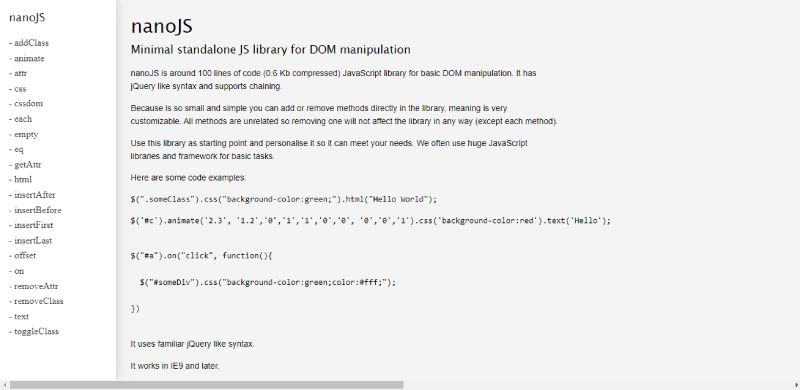
It’s like the tiny dot on a huge painting that pulls everything together—nanoJS handles DOM manipulation and event listening without the fuss, focusing on the essentials. Ideal for small projects or individual components, nanoJS operates under the radar but packs a serious punch.
Best Features
- Fast and small in size
- Easy-to-use methods
- Straightforward API
What we like about it:
The lightweight touch it brings, ensuring that the focus stays on your site’s performance and quick load times.
Balalaika
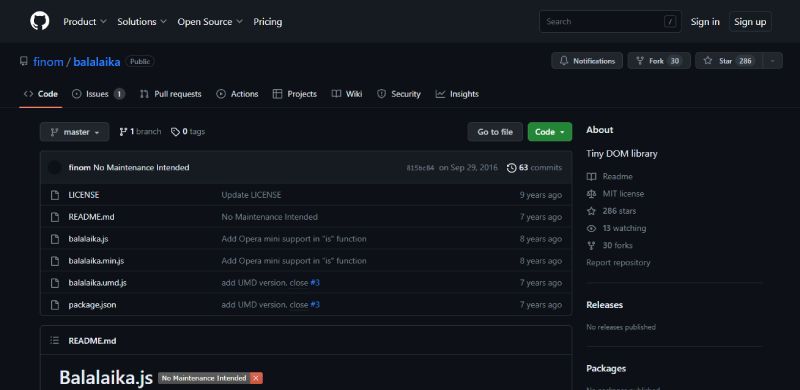
Balalaika strums a different tune, with its own JavaScript library melody. With a size that barely makes a dent in your project’s resources, Balalaika brings AJAX calls and DOM manipulation to the table, keeping things simple yet functional.
Best Features
- Super small size
- Simple selection engine
- AJAX capabilities
What we like about it:
Its almost invisible presence, yet it still manages to get the job done—a silent guardian for your code.
jBone
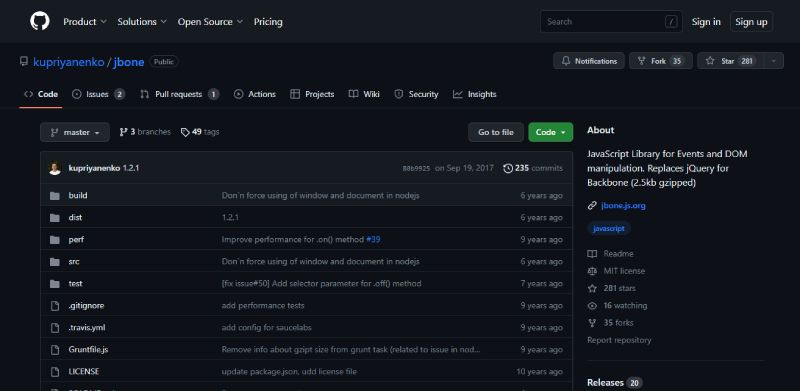
jBone may not be the full skeleton of jQuery, but it certainly provides a solid backbone for your basic needs. It targets modern browsers, focusing on the DOM’s core parts and event handling, making it a lightweight ally in the coding dojo.
Best Features
- Good for modern browsers
- Emphasis on core functionality
- Lightweight and concise
What we like about it:
The way it cuts down to the essentials, stripping away the extras and putting speed and simplicity at the forefront.
DOMtastic
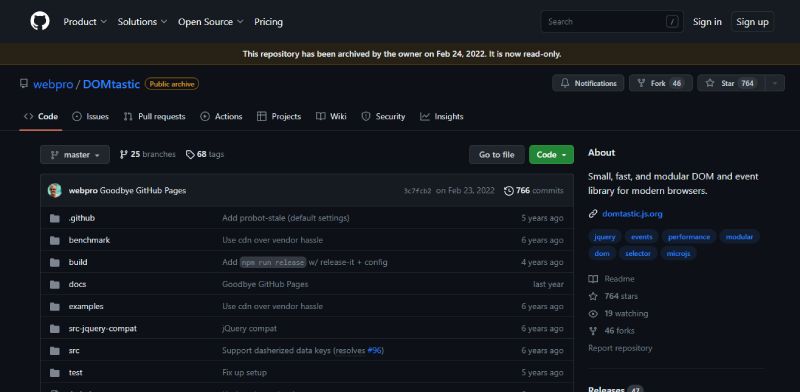
Here’s to DOMtastic, a nifty player in the JavaScript world, hand-rolling out seamless DOM manipulation without weighing down your pages. It’s like a multi-tool—splashy enough for complex tasks but not overbearing, staying true to a minimalist ethos.
Best Features
- Small and modular
- CSS3 selector support
- Simple API
What we like about it:
That it ticks all the right checkboxes for a developer and does so with ease and efficiency, like a Swiss Army knife in your digital pocket.
Minified.js
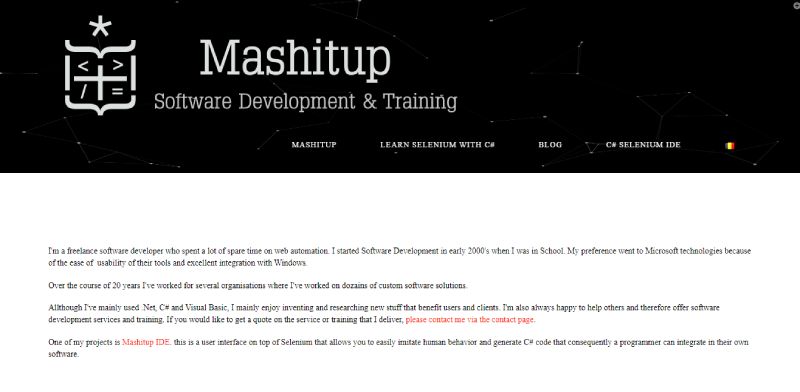
Don’t let the name fool you; Minified.js may sound small, but it’s a power-packed suite of tools in a compressed file. Offering more than just DOM manipulation, it throws in animation and AJAX utilities too, keeping your projects light on their feet.
Best Features
- Compact size
- Animations and effects
- Easy-to-implement AJAX
What we like about it:
The fusion of features in such a tiny package—it’s like carrying a whole toolbox that fits in a lunchbox, with room to spare.
Sprint
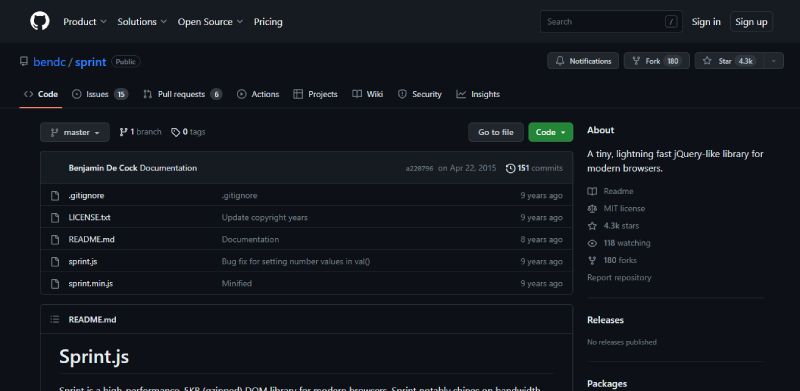
Sprint off the starting blocks with this library — small yet sprightly, ready to tackle AJAX, events, and DOM manipulation with effortless zeal. Sprint is like the nimble athlete who makes a 100-meter dash look easy.
Best Features
- Fast and performant
- Intuitive syntax
- Fluent API
What we like about it:
The way it sprints into action, giving your web project the quick pace it deserves without breaking a sweat.
Zest
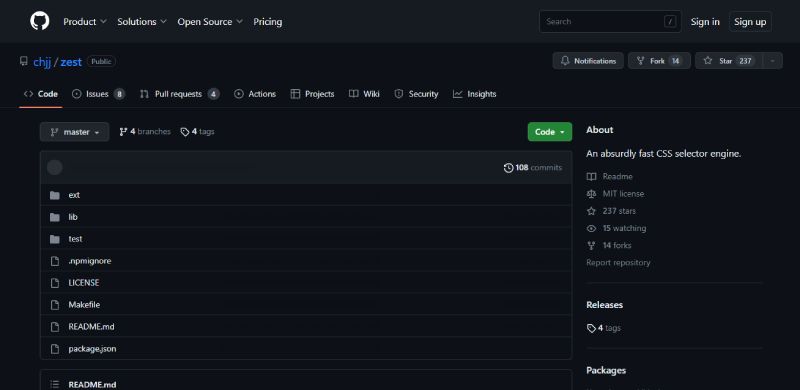
Zest isn’t just a feeling; it’s a selector engine that zips through CSS3 selectors with a zippy, no-nonsense approach. It’s for those who want straightforward, no-gimmick solutions—a little spice in their web recipe.
Best Features
- Focus on CSS3 selectors
- Fast performance
- Straightforward and direct
What we like about it:
The crispness. The singular focus on doing one thing really well, without fanfare. Like freshly grated citrus zest, it adds just enough to be impactful.
Bliss
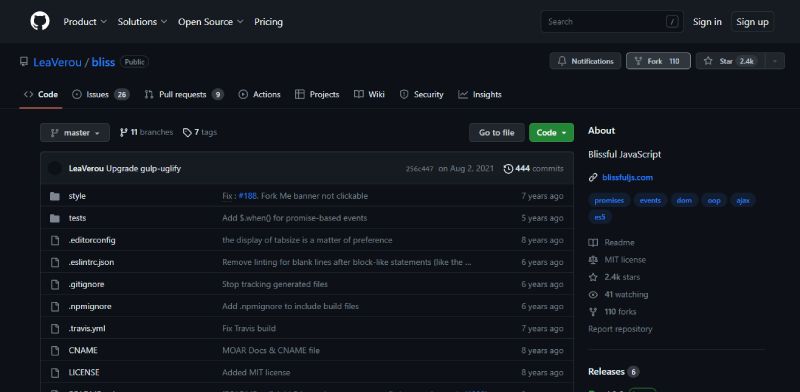
In web development, true bliss is found not in complexity, but in harmony—Bliss.js understands this dance. It extends native JavaScript with syntactic sugar, so you can sweeten your coding without the cavities of larger libraries.
Best Features
- Extends native JavaScript
- Syntactic sugar for cleaner code
- Promises and helpers
What we like about it:
The balance it brings, championing both elegance and utility. It feels like getting that perfect cookie; sweet, satisfying, and just the right amount of crumble.
FAQ on jQuery alternatives
Why Ditch jQuery?
You ever feel like shaking things up? That’s what’s up with moving from jQuery. It’s about embracing progressive enhancement in front-end web design. The code’s landscape changes rapidly; what was once essential might now be extra luggage. Opting for alternatives means seeking efficiency and modernization, tailored to today’s web standards.
Is Vanilla JS Better Than jQuery?
Imagine stripping down to basics—that’s Vanilla JS. It’s not about being better; it’s about alignment with your project goals. If you’re striving for simplicity and native browser support, hopping on the Vanilla JS train can mean a performance boost without the need for an additional library.
What Can Replace jQuery for Animations?
For those dazzling web animations, GreenSock Animation Platform (GSAP) is a solid bet. It’s like swapping out an old paintbrush for a digital art tablet. GSAP brings robustness and is versatile, making it a go-to for developers wanting fine-grain control over their web animations.
How Does Vue.js Compare to jQuery?
Think of Vue.js as your new buddy in making reactive interfaces. It steps beyond jQuery by offering a structural framework for dynamic content. While jQuery finesses elements already in play, Vue.js helps you build the play from ground zero.
Can React be an Alternative to jQuery?
Certainly! React takes you on a different journey, focusing on building components for large-scale applications. It’s like shifting from a hand mixer to a full-blown food processor – meant for bigger, more complex recipes, or in this case, web applications with dynamic user interfaces.
Are There Lightweight jQuery Alternatives?
Zepto.js whistles a tune of simplicity. It’s your go-to for projects where jQuery feels like an overkill. Picking Zepto.js is like grabbing a lighter backpack for a day hike when you don’t need the whole camping gear. It makes DOM handling a breeze.
How Important is Cross-Browser Compatibility in jQuery Alternatives?
It’s major-league important. Imagine handing out flyers that only some can read. No good, right? Same goes for web design; you want your site to shine on any browser. Alternatives nail this with modernizr or polyfills, squaring away compatibility concerns.
Does AngularJS Serve a Similar Purpose to jQuery?
AngularJS steps up the game with a full-fledged framework for rich web apps. It’s about supercharging your site with two-way data binding and a Model-View-Controller architecture. Think of jQuery as a quick fix and AngularJS as the architect building your mansion from scratch.
Is it Hard to Switch from jQuery to a Newer Library or Framework?
Switching gears always comes with a learning curve. But who doesn’t love a good challenge? Familiarizing yourself with JavaScript ES6 and beyond lays a solid foundation, easing the transition. Roll up your sleeves, dive into new docs, and soon enough you’re coding with a different flavor.
Do Alternatives to jQuery Offer Better Performance?
“Better” is subjective but lean towards “yes”. Modern browsers have evolved, and native functions are more efficient than ever. Trading jQuery for something sleeker can lead to faster load times and a snappier user experience—like swapping an old sedan for a sprightly sports car.
Ending thoughts
So we’ve been chatting about jQuery alternatives, and it’s been quite the trek through the techy terrains. Our virtual backpack is now stuffed with sleek JavaScript libraries and frameworks, each with its own flavor, ready to zest up our web creations.
- We touched on the minimalist Zen that is Vanilla JS — all about going back to basics without losing the flair.
- We eyed the elegance of Vue.js, a nifty tool that helps spin up interactive web wonders.
- React showed up, boasting its prowess in building robust, dynamic user interfaces — it’s like a magic wand for your web wizardry.
By now, ya gotta feel equipped to make that leap. Pick that perfect fit, where simplicity meets sophistication, and starts crafting sites that aren’t just functional but downright delightful. It’s a world where snappy responsiveness is king and user experience wears the crown. Go out there and make the web not just a space but a masterpiece. 🎨
If you liked this article about jQuery alternatives, you should check out this article about Hadoop alternatives.
There are also similar articles discussing Next.js alternatives, Bootstrap alternatives, React alternatives, and Java alternatives.
And let’s not forget about articles on JavaScript alternatives, GraphQL alternatives, Django alternatives, and Python alternatives.
- Questions Left Unanswered: What Happened to Formspring? - April 23, 2024
- Securing Funds: How to Get Funding for An App - April 23, 2024
- Connect and Explore: The Best Apps Like Meetup - April 22, 2024









